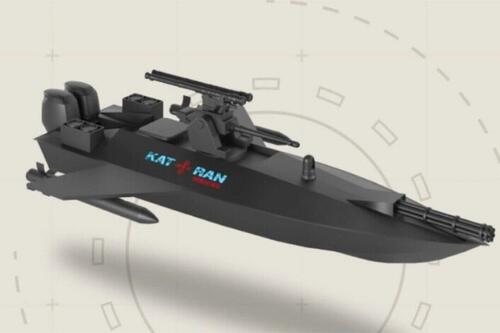Authored by Stephen Xia and Sean Tseng via The Epoch Times,
More than a century ago, Nikola Tesla proposed an invention that he said could “abolish war” as we know it, the New York Herald headlined in a Nov. 8, 1898, article. The newspaper reported that Tesla was a “great magician of science” who claimed remote-controlled weaponry could neutralize even the mightiest naval forces.
Tesla envisioned a single operator using electricity to direct ships, balloons, or land vehicles from shore, including torpedo-laden vessels poised to strike enemy ships above or below the surface.
“War will cease to be possible,” he declared, “when all the world knows tomorrow that the most feeble of nations can supply itself immediately with a weapon which will render its coast secure and its ports impregnable,” according to the article.
His system relied on line-of-sight wireless control, a limitation of his era. Tesla couldn’t have imagined today’s satellite communication, sensors, and navigation systems. These modern tools enable the precise, worldwide operation of unmanned platforms, surpassing the possibilities of Tesla’s time.
Fast forward to today, Ukraine’s unmanned surface vessels (USVs) are bringing Tesla’s vision to life amid war with Russia.
Leading the charge is the Katran, unveiled by Ukrainian Deputy Prime Minister Mykhailo Fedorov, the drone program chief, on March 25.
Also nicknamed “Shark,” this advanced USV is designed for attack and reconnaissance. It can travel more than 900 miles at speeds up to 80 miles per hour—formidable in the Black Sea, the maritime battleground for Ukraine and Russia.
Built-in artificial intelligence (AI) allows it to operate under radio silence, essential in areas filled with electronic waves. Meanwhile, its electronic countermeasures can neutralize Russia’s anti-USV drones.
Katran adds to the capabilities of Ukraine’s existing USV fleet.
With at least 15 different types, from basic jet-ski drones to sophisticated attack platforms like the Magura V5 and Sea Baby, Ukraine’s drone fleet has already damaged Russia’s Black Sea Fleet, military ports, and the Crimean Bridge.
The Katran builds on that threat, doubling as both a kamikaze drone and a multi-role strike vessel.
Katran carries an impressive arsenal: machine guns, surface-to-air missiles, and torpedoes, enabling it to strike land, air, and underwater targets. This kind of firepower poses a serious challenge to conventional defenses, such as helicopters and close-range naval guns, which Russia uses to neutralize USVs.
Last December, a Ukrainian USV armed with anti-aircraft missiles downed a Russian helicopter—a testament to their versatility.
Moreover, the recent supply of advanced torpedoes from Sweden—likely Torpedo 47s or Saab lightweight torpedoes (SLWTs)—could further expand the USVs’ attack range, allowing strikes on warships over 12 miles away.
The Katran’s AI-driven autonomy and electronic warfare suite go far beyond Tesla’s rudimentary remote control. It can complete missions with minimal human oversight, reacting to threats in real time—an evolution that Tesla could only have imagined.
The rise of USVs marks a seismic shift in naval strategy, challenging the very existence of large, crewed warships. Ukraine’s success with low-cost, agile drones in undermining Russia’s naval dominance suggests that the days of massive battleships and carriers may be numbered.
With the ability to gather intelligence and launch precise strikes autonomously, the Katran already exceeds Tesla’s 1898 concept, echoing his prophecy that advanced weapons could level the playing field for any nation, regardless of its size.
With stronger weapons, longer ranges, and smarter AI on the horizon, expensive manned platforms—such as warships, aircraft, and tanks—risk becoming obsolete. The Katran and its successors could make, in Tesla’s words, the “mightiest armorclads” become “scrap iron” in the face of innovation.
Loading…


















